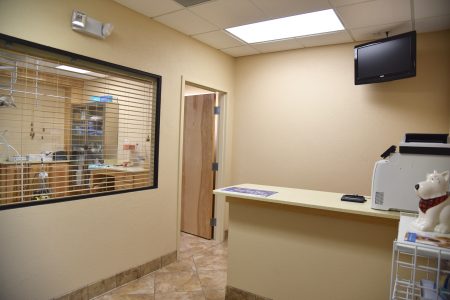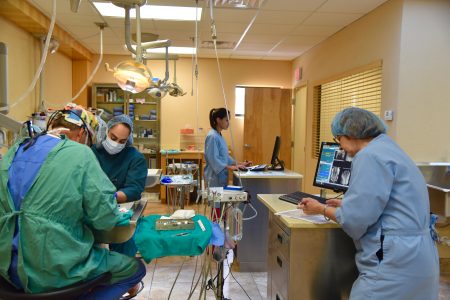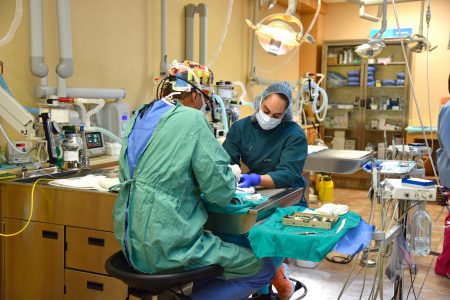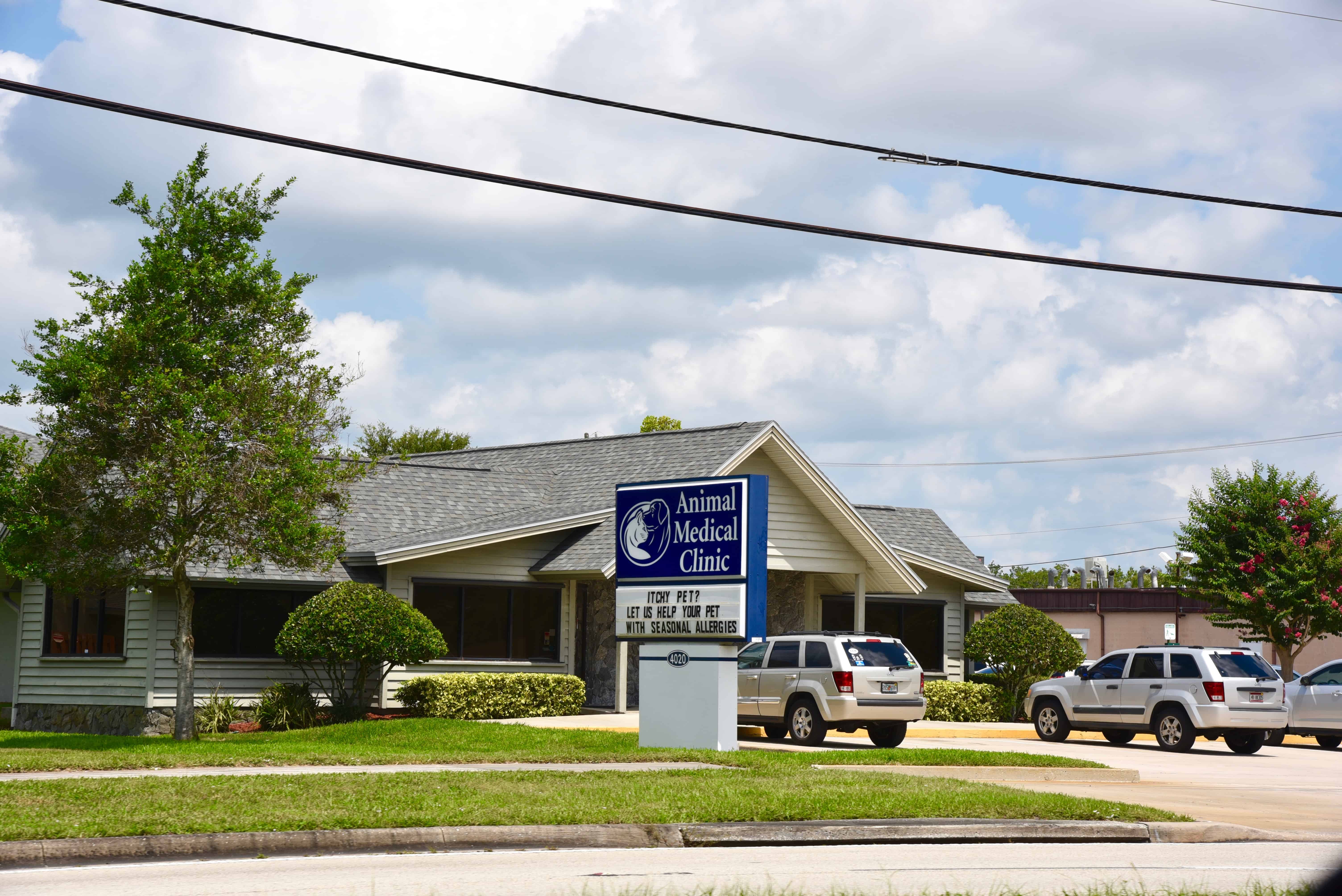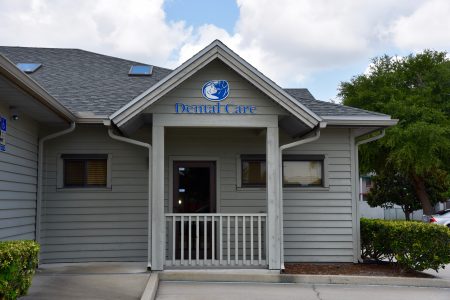
The following is a description of what is involved in a professional dental cleaning. You can also watch a video on our web site: https://animal-medical-clinic.com/dental-care-2/
On the morning of your pet’s Professional Dental Cleaning we ask that they are admitted to our hospital between 7:30-8:00am. The dental staff will check your pet in and answer any questions you may have.
Before we get started, each patient receives an exam. We will listen to their heart and lungs, get a current weight and make sure nothing has changed since their last exam. We will also check bloodwork (if not already done in the last 30 days) to make sure they are a good candidate to go under anesthesia for the dental procedure.
Once the doctor has decided on an appropriate anesthetic and pain control plan for your pet, a technician will place a catheter and then administer the anesthetic agent. The largest difference between veterinary and human dentistry is that pets must be under general anesthesia. Anesthesia is the best way to avoid injury to frightened pets, the veterinarian and technician. Newer gas anesthetics such as isoflorane have dramatically reduced the number of anesthetic complications. A tracheal tube is placed into your pet’s airway so that the gas anesthesia can be given directly to your pet. EVERY anesthetized patient is kept warm and monitored using a heart rate and oxygenation saturation monitor.
Once your pet is asleep, the technician will do a thorough oral exam to assess the teeth, and begin cleaning. During the cleaning, they are always on the lookout for problem, diseased, loose or broken teeth. A record is made of the condition of every tooth and the health of the surrounding gum tissue. Many times, once the calculus is removed from the teeth, we see problems that were not visible before the teeth were cleaned. If any abnormalities are seen, the technician will take radiographs, and the doctor will decide on the appropriate treatment plan. If extractions or oral surgery are indicated, our veterinarians will perform the surgery. We use local anesthetics or “nerve blocks” to numb an area prior to starting any sensitive procedure.
When the professional dental procedure is complete, your pet will then be recovered by our trained staff. Patients are monitored after anesthesia until they are up and mobile. We will monitor patients for at least a couple of hours after the procedure, and the vast majority of our patients go home the same day.
Once your pet is awake we will call you, and set up a discharge appointment with our technicians, so that they can go over post anesthetic care, feeding recommendations, and home dental care instructions.
We know that your pet is a member of your family, and all the staff of Animal Medical Clinic strive to provide the best and safest medical care possible for your pet. Please feel free to ask us any questions you may have.
